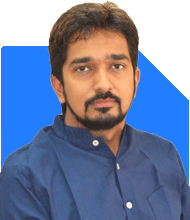Hello All,
Hope this finds you well and healthy.
I am 31 year old and working in MNC. My monthly income is 1.04L per month. Currently I am investing 20K in mutual funds (8k elss 12k (mid small and large). Yearly I invest 50k in NPS + 10k in PPF + HEALTH INSURANCE+ 38K TERM PLAN.
My monthly expense is almost 50-60k.
I seek help here, how shall I plan my future investments. Is investing in ULIP or market linked plans such as HDFC, Tata AIA capital guarantee solution.
I am looking for down the line after 10-12 year I have sufficient amount for child further education or for buying home.
Ans: Your proactive approach towards financial planning is commendable, and you are on the right track with diversified investments. Let's delve deeper into optimizing your future investments to ensure you achieve your financial goals, including your child's education and buying a home.
Current Financial Overview
At 31, you have a solid foundation with a monthly income of Rs 1.04 lakh. Here's a breakdown of your current investments and expenses:
Mutual Funds: Rs 20,000 (Rs 8,000 in ELSS, Rs 12,000 in mid, small, and large-cap funds)
NPS: Rs 50,000 annually
PPF: Rs 10,000 annually
Health Insurance and Term Plan: Rs 38,000 annually
Monthly Expenses: Rs 50,000 to Rs 60,000
Mutual Funds: A Strong Foundation
Your current investment in mutual funds is well-balanced. ELSS provides tax benefits under Section 80C, while mid, small, and large-cap funds offer growth potential.
Benefits of Your Current Mutual Funds
Tax Efficiency: ELSS funds reduce your taxable income.
Growth Potential: Mid, small, and large-cap funds diversify risk and potential returns.
Flexibility: You can adjust contributions based on market conditions and financial goals.
Evaluating ULIPs and Market-Linked Plans
ULIPs (Unit Linked Insurance Plans) and market-linked plans like HDFC and Tata AIA capital guarantee solutions offer both insurance and investment. However, it's essential to understand their pros and cons before investing.
Pros of ULIPs and Market-Linked Plans
Dual Benefits: ULIPs provide insurance and investment under one plan.
Tax Benefits: Premiums paid may qualify for tax deductions.
Flexibility: You can switch between equity and debt options based on market conditions.
Cons of ULIPs and Market-Linked Plans
High Costs: ULIPs often have higher charges compared to mutual funds, affecting returns.
Lock-In Period: Typically, ULIPs have a lock-in period of five years, reducing liquidity.
Complexity: Understanding charges and benefits of ULIPs can be challenging.
Prioritizing Financial Goals
Focusing on your child's education and buying a home requires careful planning. Here's a step-by-step approach to help you achieve these goals.
Step 1: Define Clear Goals
Child's Education: Estimate future education costs and timeframe.
Buying a Home: Determine the budget and location for your future home.
Step 2: Assess Your Risk Tolerance
High Risk Tolerance: Invest more in equity mutual funds for higher returns.
Moderate Risk Tolerance: Maintain a balanced portfolio with equity and debt funds.
Low Risk Tolerance: Focus on debt funds and fixed income instruments.
Step 3: Optimize Existing Investments
Mutual Funds: Continue investing in diversified mutual funds.
NPS: Increase contributions for long-term retirement benefits.
PPF: Consider maxing out your PPF contributions for stable returns and tax benefits.
Adding New Investment Options
To further diversify your portfolio and enhance returns, consider these additional investment options.
Systematic Investment Plans (SIPs)
Regular Investment: SIPs ensure disciplined investing with regular contributions.
Rupee Cost Averaging: Investing at different market levels reduces the impact of market volatility.
Flexibility: Adjust SIP amounts based on financial goals and market conditions.
Actively Managed Funds
Professional Management: Fund managers actively select securities to outperform the market.
Strategic Adjustments: Managers can adjust the portfolio based on market trends and economic conditions.
Potential for Higher Returns: Skilled managers may achieve higher returns compared to index funds.
Debt Funds
Stable Returns: Debt funds provide regular income with lower risk compared to equity funds.
Diversification: Including debt funds reduces overall portfolio risk.
Liquidity: Debt funds offer better liquidity than fixed deposits or ULIPs.
Planning for Child's Education
Education costs are rising, and planning early ensures you can meet future expenses without stress.
Step 1: Estimate Education Costs
Current Costs: Research current education expenses for your preferred institutions.
Inflation: Account for inflation when estimating future costs.
Timeframe: Determine the number of years until your child starts higher education.
Step 2: Create an Education Fund
Equity Funds: Invest in equity mutual funds for long-term growth.
Child-Specific Plans: Consider child education plans with benefits tailored to education funding.
Regular Contributions: Set up SIPs to build a corpus over time.
Planning for Buying a Home
Buying a home requires substantial financial planning and saving. Here's a structured approach to achieve this goal.
Step 1: Determine Your Budget
Location and Size: Decide on the location and size of the home you wish to buy.
Down Payment: Calculate the down payment required and monthly EMIs you can afford.
Additional Costs: Consider additional costs like registration, maintenance, and property tax.
Step 2: Build a Home Purchase Fund
Equity Funds: For a 10-12 year horizon, equity funds can provide significant growth.
Debt Funds: Include debt funds for stability and lower risk.
Recurring Deposits: Consider recurring deposits for regular savings with fixed returns.
Insurance and Emergency Fund
Ensuring adequate insurance coverage and maintaining an emergency fund are essential components of financial planning.
Health Insurance
Adequate Coverage: Ensure your health insurance covers potential medical expenses.
Regular Review: Periodically review your coverage to adjust for inflation and changing needs.
Top-Up Plans: Consider top-up health insurance plans for additional coverage.
Term Insurance
Adequate Sum Assured: Ensure your term insurance covers your family’s future financial needs.
Regular Review: Update your term plan as your financial responsibilities grow.
Riders: Consider adding riders like critical illness for comprehensive coverage.
Emergency Fund
Three to Six Months: Maintain an emergency fund covering 3-6 months of living expenses.
Liquid Assets: Keep the fund in liquid assets for easy access during emergencies.
Regular Contribution: Contribute regularly to ensure the fund remains adequate over time.
Avoiding Common Investment Pitfalls
Staying aware of common pitfalls helps protect your investments and achieve your financial goals.
Avoid High-Cost Investments
High Charges: Avoid investments with high charges that erode returns, like certain ULIPs.
Hidden Fees: Be aware of hidden fees in investment products.
Diversify Your Portfolio
Single Asset Risk: Avoid concentrating investments in a single asset class.
Balanced Approach: Maintain a mix of equity, debt, and other instruments.
Regular Review and Rebalance
Performance Review: Regularly review investment performance to ensure alignment with goals.
Rebalancing: Rebalance your portfolio to maintain the desired asset allocation.
Final Insights
Your current financial strategy is commendable, showing a well-diversified approach. To optimize your investments for future goals like child education and buying a home, consider increasing contributions to equity mutual funds and maintaining a balanced portfolio. Avoid high-cost investments like ULIPs unless necessary for specific benefits. Regularly review and adjust your portfolio with the help of a Certified Financial Planner to stay on track. Your proactive approach today will ensure a secure and prosperous future.
Best Regards,
K. Ramalingam, MBA, CFP,
Chief Financial Planner,
www.holisticinvestment.in


























